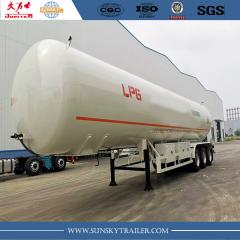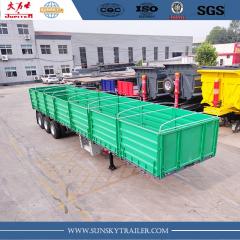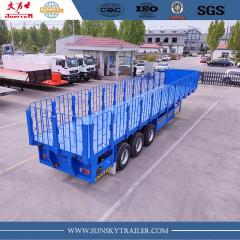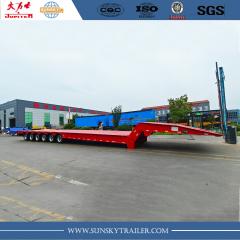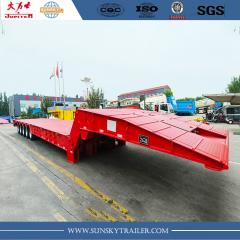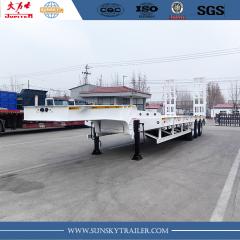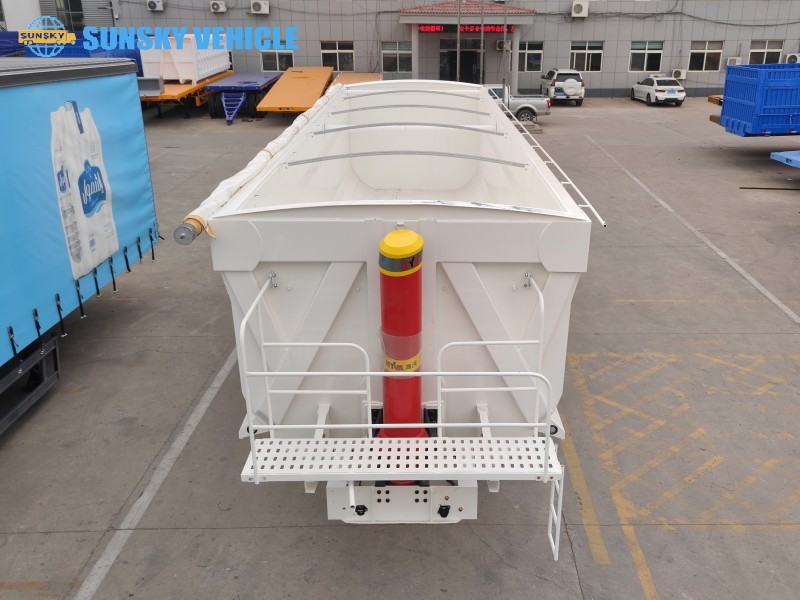- Blog
- What Is a Flatbed Truck? – Complete Guide for Logistics & Transport
- What Is a Dump Trailer? The Complete Guide to Types, Uses, and Choosing the Right Hauler
- Why Are Semi-Trailers Essential in Modern Logistics?
- Why do tires eat?
- What Is A Lowbed Trailer Used For?
- Causes of Semi-Trailer Crashes
Categories
Recent Posts
Have you ever been daunted by the daunting challenge of cleaning up the remnants of a large project, such as construction debris, large amounts of soil, rubble, or heavy waste? Traditional manual loading and unloading is not only time-consuming and labor-intensive, inefficient, and a heavy burden on your back and wallet. When you're faced with a job that requires regularly moving or dumping bulk materials, you need a more efficient and rugged solution.
That's where dump trailers come in.
Simply put, a dump trailer is a versatile trailer equipped with a hydraulic lift system. Its core advantage is that it eliminates manual unloading. With the push of a button, the powerful hydraulic system automatically tilts the container, dumping the material quickly and thoroughly. This not only reduces cleanup time from hours to minutes, but also significantly improves your work efficiency and safety. It has become an essential tool for construction companies, landscapers, agricultural users, and heavy-duty DIY enthusiasts.
Are you ready to master this powerful equipment? In this article, we'll provide a complete guide, delving into the anatomy of a dump trailer, its key types, its wide range of uses, and most importantly—how to choose and maintain the model that best suits your needs. After reading this, you'll be able to confidently make an informed decision to make your next heavy-lifting job a breeze.
II. The Anatomy and Workings of a Dump Trailer
To truly understand how dump trailers are revolutionizing material handling, we need to delve into their core components and how they work together.
A. Core Definition and Components
What makes a dump trailer unique is its structure, which is designed around hydraulic lifting. Here are the key components that make up this powerful machine:
Bed & Sides: This is the main structure used to carry the material. Beds are typically constructed of heavy-duty steel or aluminum to withstand rough and heavy loads.
Side Height: This determines the trailer's capacity (volume). High sides are suitable for lightweight, high-volume materials (such as leaves and trash); low sides are suitable for heavier materials (such as sand and gravel), making loading and unloading easier.
Chassis & Frame: A sturdy supporting structure connecting the axles, suspension system, and tow hitch. Its strength directly determines the trailer's maximum load capacity.
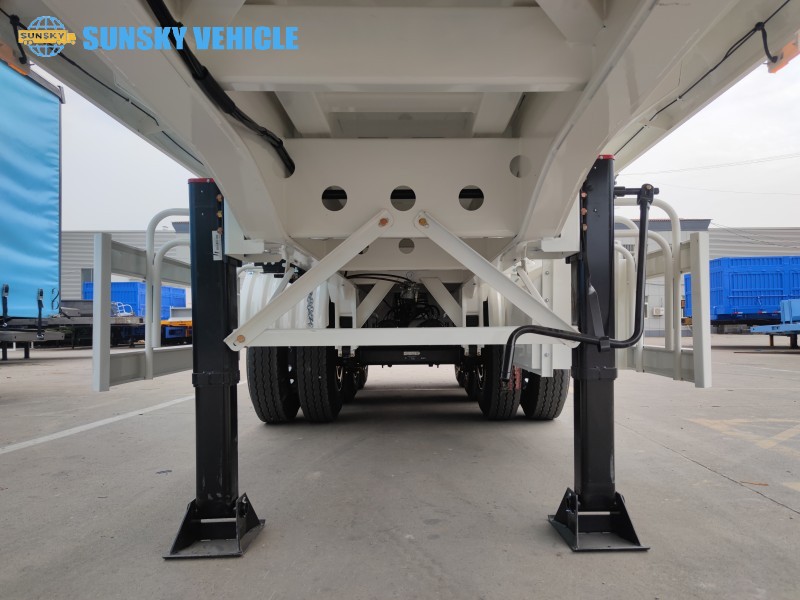
Hydraulic System: This is the heart of the dump trailer. It consists of a hydraulic pump, cylinders, a reservoir, and batteries.
Hydraulic Pump: Converts electrical energy into mechanical energy to drive the hydraulic fluid.
Hydraulic Cylinders: Typically single or dual cylinders, these cylinders expand and contract under the pressure of hydraulic fluid to lift and tilt the trailer.
Batteries: Power the hydraulic pump.
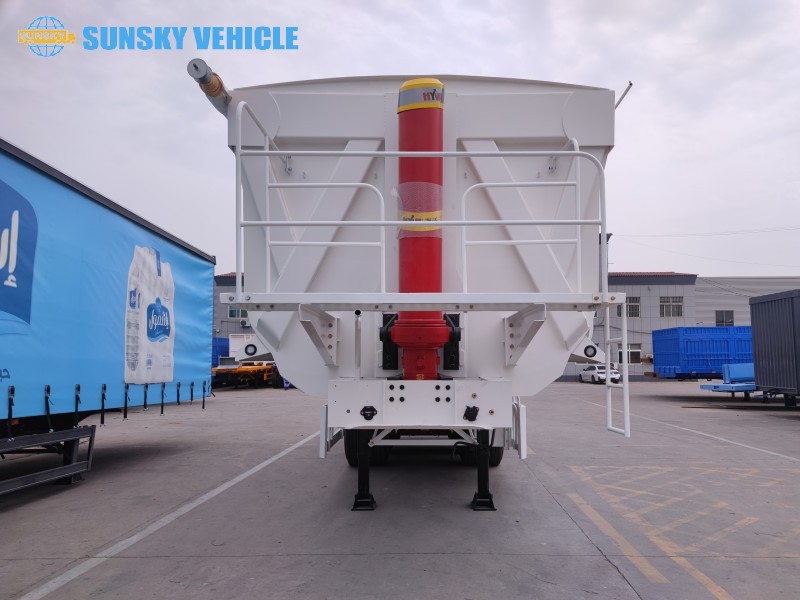
Tailgate Type: The design of the tailgate is a key factor influencing unloading efficiency.
Barn Doors: These can be fully opened to either side, making them suitable for large-volume unloading using equipment such as forklifts or bulldozers. Spreader Gates: These hinged doors open a small gap, allowing materials (such as sand, gravel, or mulch) to be spread evenly in small, small batches. They are ideal for landscaping applications.
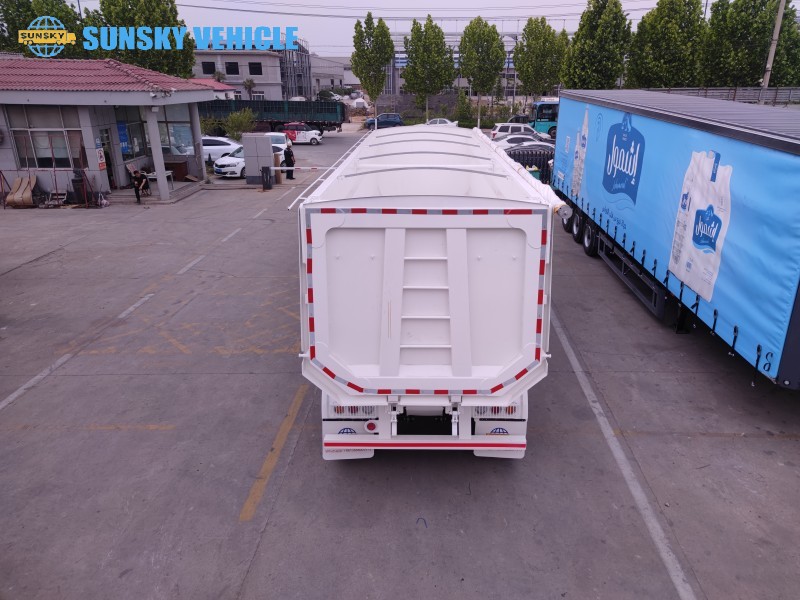
B. How It Works
The operation of a dump truck is straightforward, but the hydraulic engineering behind it is quite sophisticated:
1. Preparation: Ensure the trailer is connected to the towing vehicle and on flat, stable ground.
2. Activation: The driver activates the hydraulic pump using a wired or wireless remote control.
3. Lifting: The hydraulic pump pushes hydraulic fluid from the reservoir into the cylinder under high pressure. Under pressure, the cylinder rod slowly extends, pushing against the bottom connection point of the dump truck, causing the dump truck to tilt upward around the rear hinge point.
4. Unloading: The dump truck tilts to a predetermined angle (usually 40° to 50°), and gravity causes the material inside the dump truck to slide down and dump automatically.
5. Return: After unloading is complete, the operator releases the hydraulic pressure, and the container smoothly returns to its horizontal towing position under the influence of gravity or hydraulic control.
This efficient hydraulic system transforms time-consuming and dangerous manual labor into an easy, push-button operation.
III. Key Type Comparison: How to Choose Your Towing Mechanism (H2)
Dump trailers are powerful, but they come in a variety of types. Choosing the right one often depends on your towing vehicle, required load capacity, and usage scenarios. Understanding the differences between different towing and design types is key to making the right investment.
A. Towing Type Comparison (H3)
The towing mechanism determines how the trailer is connected to your truck, which significantly impacts its stability, load capacity, and maneuverability.
Connection Method: Uses a standard ball hitch, typically mounted on the towing vehicle's rear bumper or receiver.
Pros: Versatile and easy to operate.
Cons: Weight restrictions and slightly less stability.
Useful for: Small to medium-sized projects, daily cleanup.
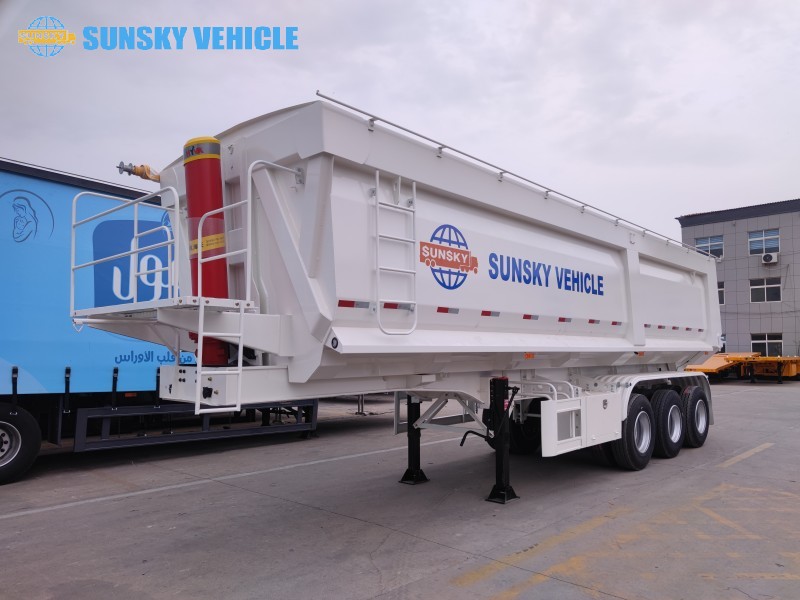
2. Gooseneck
Connection Method: Uses a semi-trailer-like "gooseneck" shaped neck to connect to a ball or fifth-wheel hitch in the truck bed.
Advantages: Excellent load-bearing capacity and high stability.
Disadvantages: Requires a dedicated truck and takes up space.
Useful Applications: Heavy construction, commercial demolition, and long-distance hauling.
B. Design Type Comparison
In addition to towing method, the design of the box also affects the practicality of a dump trailer.
1. Low-Profile
Features: The box is mounted between the tires, resulting in a low loading platform and side panels.
Advantages: Easy loading and low overall height.
Useful Applications: Landscaping, gardening materials, and residential remodeling.
Features: The box is mounted above the wheel arches, and its width is approximately the same as the overall width of the trailer.
Advantages: Maximizes width and facilitates side loading and unloading.
Useful for: Transporting palletized cargo and commercial applications requiring maximum loading width.
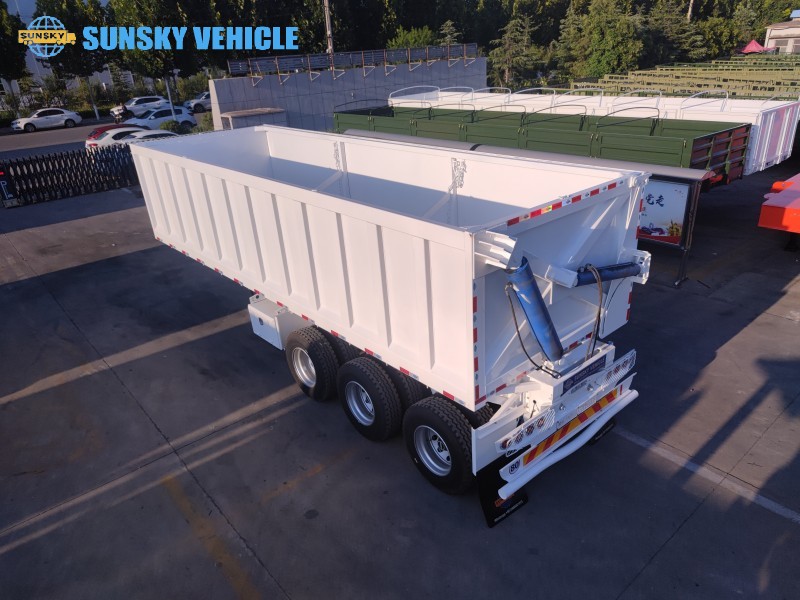
IV. The Wide Range of Uses and Applications of Dump Trailers
The versatility of dump trailers is at the heart of their value.
1. Construction & Demolition
Transport and Removal: Concrete blocks, bricks, and rubble.
Material Supply: Transporting sand, gravel, and aggregate.
2. Landscaping & Gardening
Bulk Material Transport: Moving large quantities of soil, mulch, or decorative stone.
Efficient Spreading: Precise spreading with a tailgate.
Waste Removal: Removing pruned branches and tree debris.
3. Waste Management & Recycling
Trash Disposal: Transporting large amounts of waste generated after large events or home renovations.
Scrap Metal Recycling: Loading and transporting scrap metal.
4. Farming & Agriculture
Crop and Feed Transport: Transporting grain and feed. Soil Improvement: Transporting lime and fertilizer.
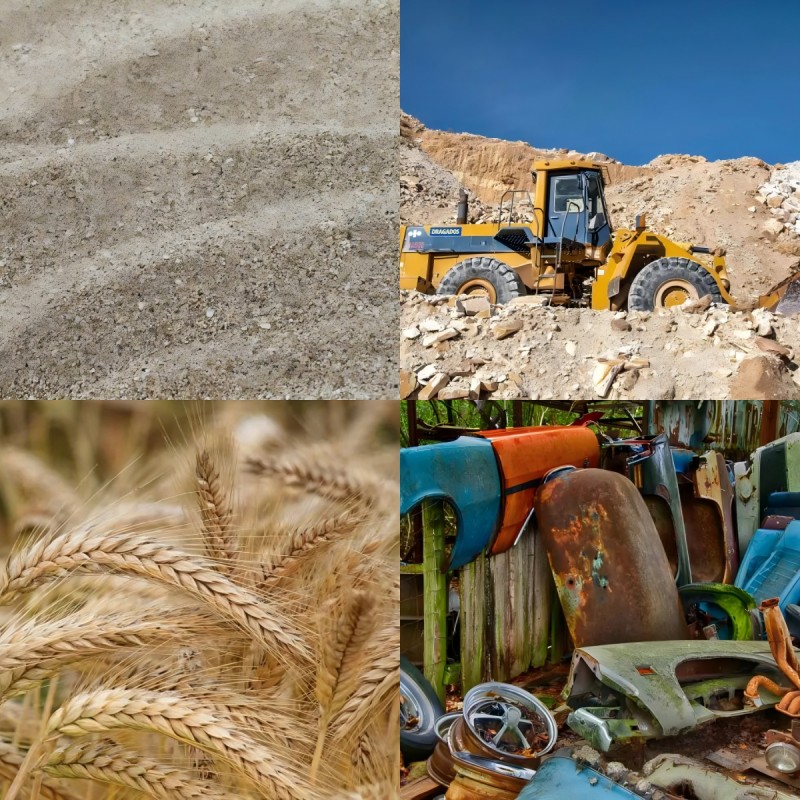
V. Ultimate Buyer's Guide: Choosing the Right Dump Trailer
Buying or renting a dump trailer is a significant investment.
A. Key Specifications: Balancing Weight and Capacity
The biggest mistake when choosing a dump trailer is focusing solely on size.
1. Payload Capacity
Payload = Gross Vehicle Weight (GVWR) minus trailer weight
Important: Different materials vary greatly in weight. Always use the weight of the heaviest material you plan to transport as your primary guide.
2. Volume
Capacity is typically measured in cubic yards.
High-density materials (such as sand and gravel) should prioritize payload over load.
B. Must-Consider Accessories
The right accessories can enhance the safety, versatility, and lifespan of a dump trailer.
Ramps: Essential for transporting small equipment (such as skid-steer loaders). Tarp Systems: Required by law in many areas.
D-Rings and Tie-Down Points: Secure the equipment to prevent movement.
Battery Charger: Ensures the hydraulic system is always operational.
C. Leasing vs. Buying: When to Decide
Simple Rule: If you anticipate using the trailer more than 15 to 20 times per year, buying is generally more cost-effective. For less frequent projects, leasing is a better option.
VI. Safety, Maintenance, and Regulatory Requirements
Dump trailers are heavy equipment and must be used and maintained properly to ensure safety.
A. Maintenance Tips: Maintaining a Healthy Hydraulic System
Hydraulic Fluid Inspection: Regularly check the hydraulic fluid level and quality.
Hose and Seals: Inspect for cracks or leaks.
Battery Inspection: Ensure the deep-cycle battery is functioning properly and is charged regularly.
Structural Inspection: Inspect the tank and frame for cracks or corrosion.
B. Important Towing and Operating Safety Tips
Load Distribution: Always follow the 60/40 rule (60% of the weight on the front).
Do Not Overload: Strictly adhere to the gross vehicle weight rating (GVWR) limits.
Unload on Level Ground: Avoid operating on sloped surfaces.
Safety Chains and Break Switches: Ensure they are functioning properly.
C. Legal and Licensing Requirements
GVWR Limits and CDL (Commercial Driver's License): Verify local licensing requirements for gross vehicle weight rating (GVWR).
Registration and Licensing: Ensure road legality.
Braking System: Ensure the trailer is equipped with a functioning independent braking system.
VII. Conclusion
A dump trailer is more than just a tool; it's your productivity center for any heavy material handling project. By upgrading your manual handling tools to a dump trailer, you're investing not only in equipment but also in time, efficiency, and worker safety.
If you're ready to take your project efficiency to the next level, or have questions about which dump trailer is best for your specific job, contact our expert team today.
SUNSKY TRAILER offers a wide variety of dump trailer types and capacities, and we'd be happy to provide you with expert advice and a quote that best meets your budget and needs!





